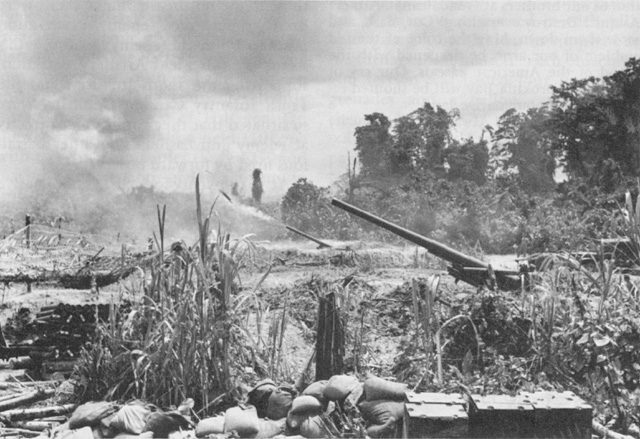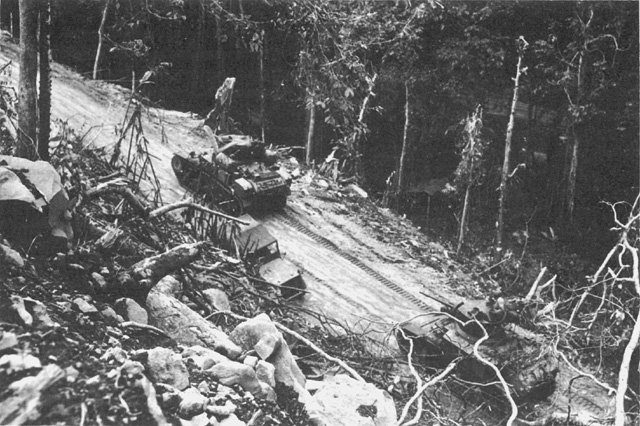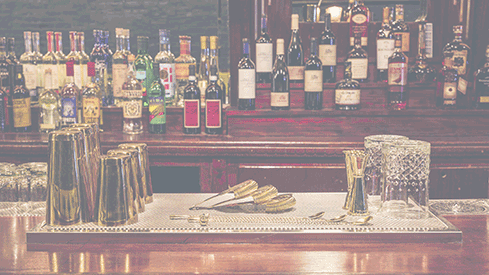Another fall Saturday in the books, another Buckeye victory- this time, in a cool September rain. Today is a good day for remembrance as well- so, I’ll dedicate this particular little discussion to missing friends.
As usual, if you’re interested in the content, please feel free to comment below. And if you want check out the previous battle in the series, or some of the other content on the site for military history, check out the archive by clicking here.
CARTWHEEL Continues
After securing Munda Point, operations on New Georgia continued, but the main Japanese resistance had been broken. As such, the main effort of the Allies in the region turned toward New Guinea, and the major Japanese base at Lae. Lae was a forward base for Rabaul, which covered the air approaches from Port Moresby to Lae. It also served as a base to support attacks against Port Moresby, both by air and by land, over the Owen Stanly Mountains. It had to go.
This led to Operation POSTERN, a combined US-Australian operation to take Lae and some other bases in the region. The operation kicked off on September 4th, 1943, when the US Navy transported an Australian division to the coast near Lae, while a US Parachute regiment landed and seized a small airfield near Lae, which the Allies used to airlift another Australian division into the area. The two forces quickly drove on Lae, overwhelming the Japanese defenders by September 16th. The Allies quickly turned Lae into a land, air and sea base for further operations, the first of which went against the Japanese base at Mandang, another in the chain that needed to fall in order to complete the encirclement of Rabaul.

While the Allies were securing Rabaul and moving on Mandang, they also prepared for the next step up the Solomon Islands, Bougainville. The Japanese were no fools, and knew the Allies would move on Bougainville as well, and began moving men, supplies and airplanes to the island in large numbers. The Allies needed bases closer to Bougainville to support the attacks against the island. This lead to Operation GOODTIME, in which New Zealander units seized the Treasury Islands, and Operation BLISSFUL, where Marine Raiders attacked a Japanese base on Chousil. These seized important bases, and served to confuse the Japanese as to where the next attack would likely fall.

Operation CHERRYBLOSSOM
The original plans for CARTWHEEL called for securing Bougainville as a base for further operations against Rabaul, and to deny the area as a base for the Japanese to support Rabaul. However, while the original plan called for securing the entire island, circumstances had changed over the previous months. The Japanese had turned the island into a fortified bastion, with 45,000 men and a hundred airplanes on the island. This would take a much more significant effort than previously envisioned to secure the island.
So, the Allies changed the plan. They still needed a base on Bougainville, and they still needed to deal with the Japanese using the island as a base. However, Allied planners decided that the best solution wasn’t to take the Japanese head on. Bougainville is a rugged island, much like New Georgia, with steep mountain ranges and heavy jungles. Most of the Japanese forces were concentrated in the northeastern part of the island, where the ports were best developed and where the island was closest to Rabaul. Rather than take that head on, the Allies decided to land at Empress Augusta Bay, clear out the small Japanese garrison there, and build a series of bases to suppress the Japanese army in the north, isolate it by sea, destroy the planes there, and then support operations against Rabaul that way.
The Americans, heading up the operation, went ashore on November 1st, 1943. The 3rd Marine division made the initial landings, going ashore quickly. Learning lessons from earlier landings, the US only loaded their ships halfway, using more ships to carry the needed cargo. This sped offloading, and allowed the transports to get away, empty, before the bombers from Rabaul could attack them and cause significant losses in ships and needed material. The Japanese presence was light, and, by midmorning, had been overwhelmed.

The Japanese did not take long in responding to the new American landing. In Rabaul, the Japanese threw together a force of transports, with orders to land troops and attack the Americans, along with a force of cruisers and destroyers to escort the ships, and attack the Americans in Empress Augusta Bay. During the transit, the Americans spotted the convoy, and the Japanese decided to send the transports home, while the warships would raid the American transports on the night of the 1-2nd of November. That night, US and Japanese warships clashed in another one of the night cruiser/destroyer fights that occurred throughout the Solomon Campaign. The US ships drove the Japanese off after heaving fighting all throughout the wee hours of the morning of the 2nd, securing the beaches from further attack. A few days later, US carriers followed up with a raid on Rabaul, blunting any effort to make another major Japanese naval effort against Empress Augusta Bay.

The Japanese still could send reinforcements by sea, on board destroyers and other small craft, just as they had on Guadalcanal and New Georgia. Many of these elements landed near the US beachhead in early November, engaging in raids and defenses against the Marines as they established a perimeter that would allow the Seabees to build a series of airbases and PT Boat ports that would support the forces that would attack Rabaul and suppress the Japanese bases on the northern end of the island. As the Marines expanded the perimeter, the 37th Division landed, and was assigned part of the perimeter to defense. During this time, the Marines expanded the perimeter, including the notable battles of Pvien Forks and Hellzapoppin Ridge, which allowed the US to build bases without interference from Japanese artillery in the area.
With the bases established and the perimeter secure, the Americans dug in, and planes began flying nearly daily raids against Rabaul, along with other operations around New Britain to further isolate the big fortress.
The Battle of Hill 700.
By the turn of the year from 1943 to 1944, the Japanese commander on Bougainville, General Harukichi Hyakutake, determined that the Americans were going to ignore his forces on the northern end of the island, and just hold the perimeter around Empress Augusta Bay. He resolved to attack and capture the fields there with his troops. However, he lacked the ability to move the needed number of troops by sea, and such an attack would run into American planes and ships operating out of the Bay. So, he decided to move his troops overland, along the ridges central to the island, and through the dense jungles. He sent 15,000 men, along with most of the field artillery on the island, to make the attack. The Americans had learned well- it’s better to let the enemy walk through malarial jungles and stretch their supply lines, and the Japanese suffered heavily in terms of malnutrition and disease, on the march down the island.
The American perimeter was held by two divisions: the western half by the 37th Division, the eastern half by the Americal Division. Each division held two regiments on the line, with one in reserve, along with a Marine detachment in overall reserve, along with artillery support from an Army coastal defense artillery battalion and several destroyers. Overall, the Japanese attack seemed hopeless on paper- too few men against prepared positions- but, odd things do happen in war.

The Japanese planned a series of attacks against American positions along the perimeter over the course of March 8th to March 11th, opening holes in the defensive perimeter before coordinating an attack on the airfields and shore supply dump, forcing the surrender of the Americans ashore. The first attack would come at dawn against Hill 700, held by elements of the 37th Division.
Across the valley from Hill 700 stood several hills, many of which actually overlooked 700. From there, the Japanese launched artillery attacks not only against Hill 700, but against emplacements in the rear and against the airfields as well. Japanese gunnery was poor, but the random nature of the firing raised tension among the American troops. The 37th Division sent forward patrols to those nearby hills, who came back and reported thousands of Japanese troops in the area, moving on the hill. American artillery began attacking the enemy troop concentrations, killing many, but not quite enough. The Japanese moved into the shadow of Hill 700, too close to American positions to allow for heavy American artillery bombardment.

Rain and fog dominated the jungle, making observation difficult. Throughout the day, as the Japanese concentrated, forward Japanese units tried to infiltrate into and through the American positions. Others exchanged rifle and mortar fire with the Americans until night fell. Once night fell, the Japanese attack began. Using explosives, the Japanese blasted holes into the barbed wire, and, supported by artillery, the Japanese made a series of attacks against the American position. The fighting was so intense one forward observer called artillery on his own position several times, while pockets of American troops fought hand to hand, and machineguns in pillboxes ripped through the night.
In the end, though, the Japanese attack was largely successful, gaining several important points on the hill and knocking out several pillboxes. The Japanese attackers quickly dug in over the rest of the night, fortifying their gains. At dawn, the Japanese planned to continue the attack, however, American artillery bombardments against the new Japanese positions quickly dissuaded them. Instead, the Japanese concentrated on preparing for the American counterattack, which came at midmorning on the 9th. This attack ran into the prepared Japanese positions, got pinned down, and then cut up badly by Japanese artillery. It took concentrated counterbattery fire by the Americans to extricate the troops, who fell back.
A night attack was successful at first, only to discover that the reverse slope of Hill 700 was riddled with Japanese defenders. Further Japanese reinforcements also came up in the night, stopping the American advance. The next day, the Americans brought up even more firepower, including heavy anti-aircraft guns that fired directly on the pillboxes held by the Japanese. A massive air raid swept over the top of the hill, and naval gunfire plastered the positions all day on the 10th. That evening, the Americans launched a strong attack against the Japanese position, hoping to retake the top of the hill and most of the pillboxes there. While the Americans hoped to waltz into the place, the Japanese were in much stronger shape than they had realized. Despite this, the Americans continued to gain ground.

To reinforce the beleaguered Japanese defenders, the rest of the Japanese force in the area organized a series of Banzai attacks against the Americans. These attacks both went into the Japanese held area, and against the American held flanks of the position. Heavy American firepower hammered the assault, but, still the Japanese came, running over and through the fallen bodies of their comrades. By dawn, the attack had broken up, but the Japanese held many of their positions.
The 11th found both sides rather exhausted by the previous three days of fighting, and it was a slow day- both sides attempted to bring in reinforcements, to prevent enemy efforts to reinforce, and bring supplies up. Later in the day, the Americans launched a slow, methodical attack trying to reduce each pillbox in turn. These attacks continued to the 12th, and, by midafternoon, the men of the Buckeye Division had restored the perimeter, with the Japanese in front of them either dead or falling back in disarray.
While this was going on, the Japanese made their other attacks against the American Perimeter. These attacks went on for the next two weeks, with the Japanese able to make lodgements in the American lines that were slowly, but surely, overwhelmed and retaken. The remaining Japanese forces linked up together into one force for one last attack on March 23rd, which the Americans knew to expect. The survivors of the attack scattered in to the jungle, pursued by US and Fijian troops to keep them off the American perimeter.

In the end, the Americans suffered 263 men killed, and about 1000 wounded. The Japanese losses were much heavier- 3500 killed, another 5000 wounded. The Japanese wouldn’t be able to threaten the American perimeter, which soon expanded with the 93rd Division, the first African American troops to arrive in the Pacific Theatre, joined the perimeter. In November, the Australians brought in two more divisions, and began working to clear the island- a task that wasn’t complete before the end of the war.
